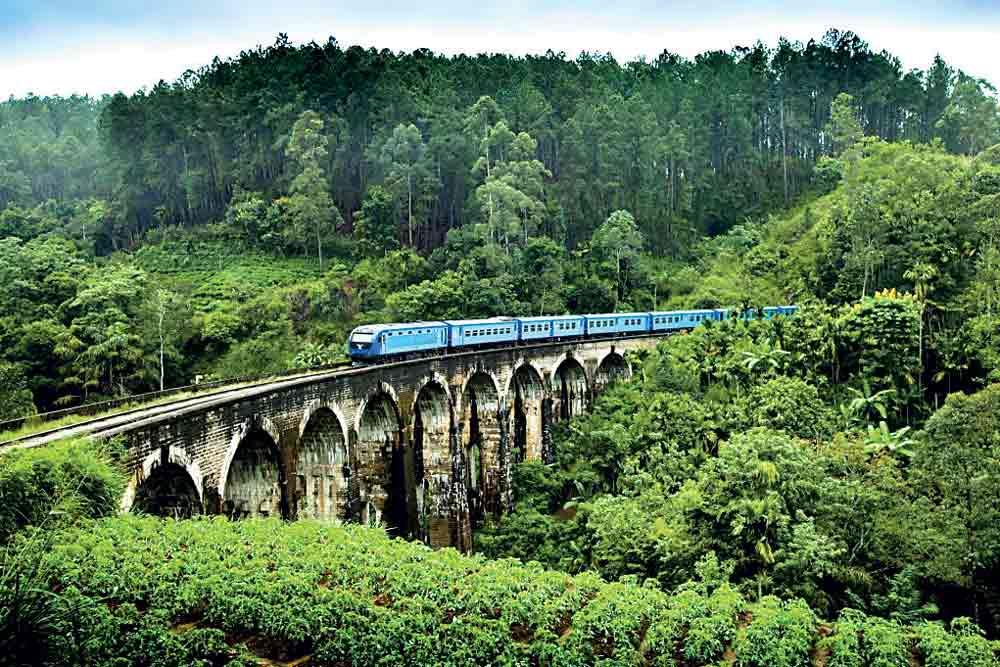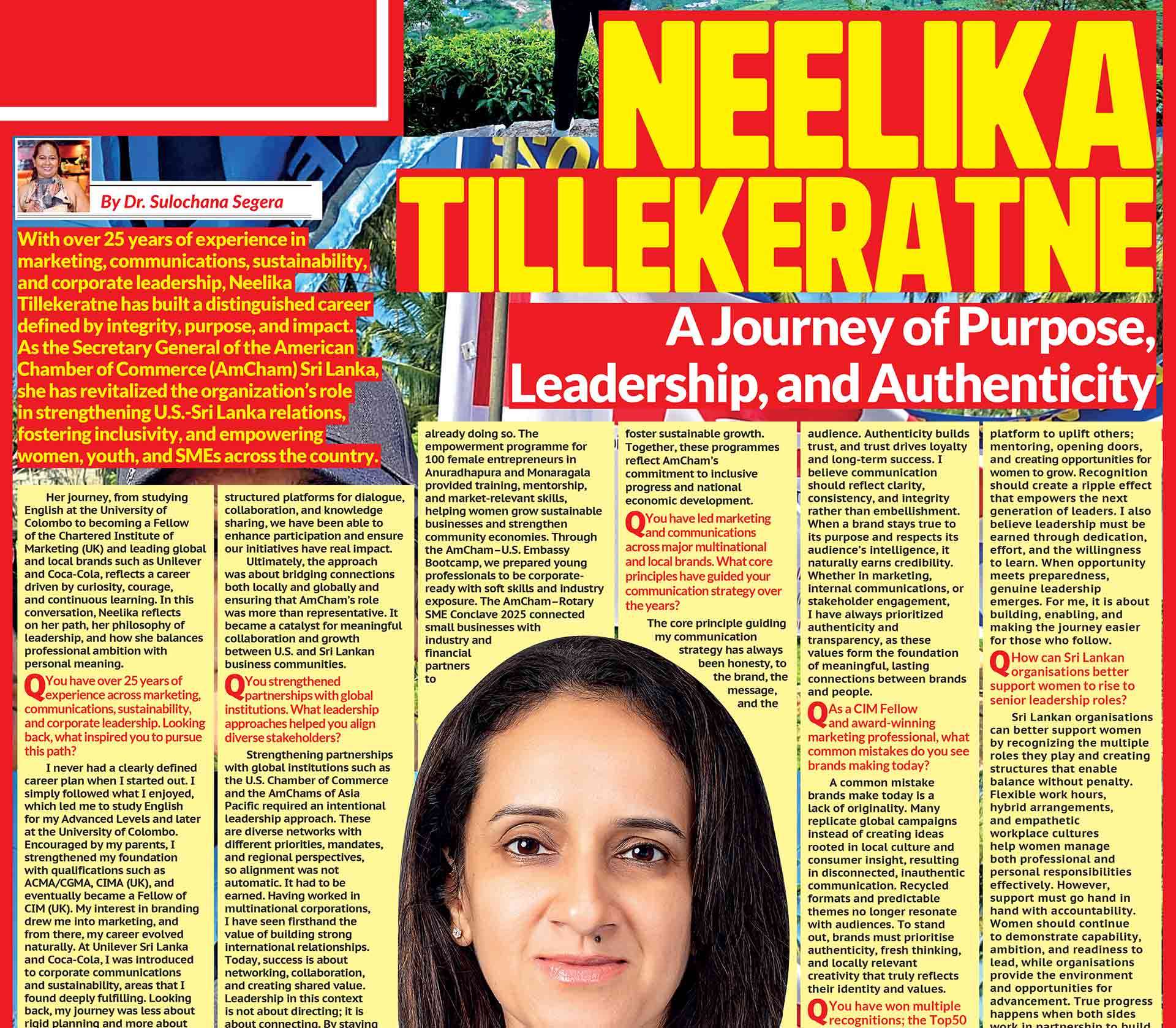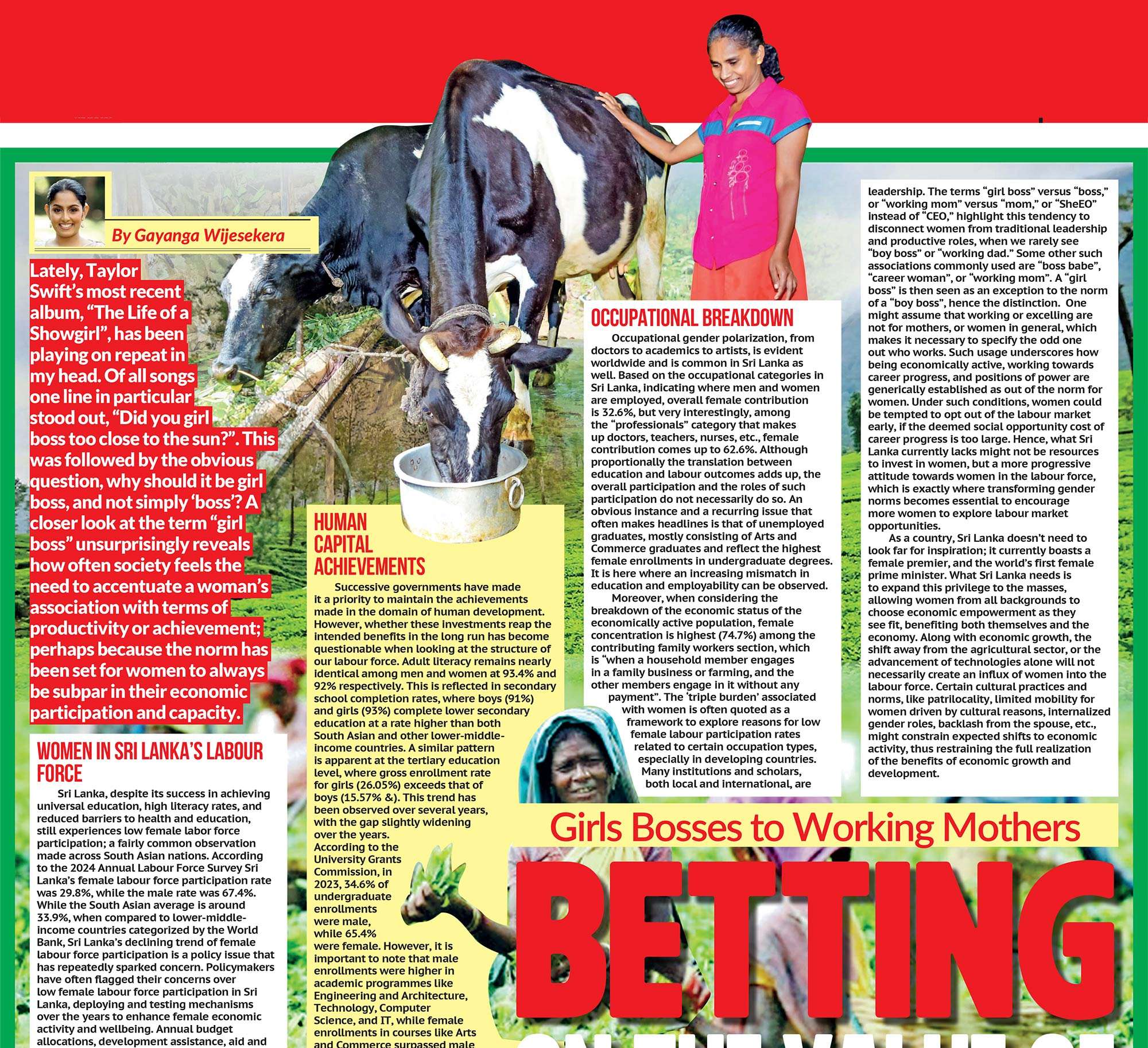
Sri Lanka aims to become a global leader in tourism by attracting 4 million tourists and boosting earnings to US$8 billion by 2026. As of November 2025, 1.95 million tourists have visited the country, with another 200,000 expected by the end of the year. Sustainable tourism is one of the objectives of Sri Lanka’s 2030 National Development Plan. To achieve this, the government needs to take steps to ensure there is a shift from mass tourism to higher-quality tourism. This is essential for ensuring long-term success in the tourism industry. Currently, the country lacks a clear, long-term strategy which intends to achieve more than just higher tourist numbers, but to attract high-value tourists. Sri Lanka has an average tourist footfall of around 65-70 tourists per km².
The estimated maximum capacity would be 4.2 to 4.5 million tourists annually; however, this must be dispersed geographically to avoid overcrowding. The government aims to attract 5 million tourist arrivals by 2026. If they are to do so, they will need to prioritise the implementation of sustainable tourism policies. Instead of pursuing high arrival numbers, Sri Lanka should focus on increasing tourism revenue through value-added services and premium experiences. Implementing a well-researched carrying capacity framework will help policymakers balance economic benefits with environmental and social sustainability. Let us take a look at and analyze some of the current policies governing tourists and their behaviour within Sri Lanka:
Tourist Transport
The quality of tourist transportation is crucial to Sri Lanka’s reputation as a tourist destination. The Ministry of Finance is being urged to provide a targeted support package to help these sustainable vehicles become more affordable. Proposed policies include a tax concession and soft loan schemes for hybrid or electric vehicles. Pleas by the Chauffer Tourist Guides Association have been repeatedly unanswered by local fiscal authorities, leaving them with old fleets. Most of these vehicles are 10-12 years old. Replacing this fleet has been made restrictive by high import duties under current economic policies. This has made it difficult for chauffeurs to drive tourists around safely and comfortably. Ranjith Sudasinghe, Vice President of the CTGLA, said, “A suitable tourist vehicle with ample boot space now costs at least Rs. 25-30 million. This is completely out of reach for our members, who are still paid low amounts per kilometre by tour operators, and these rates have been frozen for years.” However, a solution beyond hiring tourist transport may be necessary, a stronger transport system connecting major tourist points. There is a lack of a modern high-speed tourist line seen in other countries. To achieve their sustainable goals of minimizing climate change, it may be necessary to reduce the number of vehicles on the road and strengthen the public transport system to make it more accessible to tourists, as the main way to get around now is buses; however, these are often criticized for being uncomfortable.
The need for stricter deterrents to prevent tourists from working
In many parts of Sri Lanka, including Arugam Bay and Mirissa, foreigners are taking over grocers, food stalls, and restaurants. They take over local spaces and businesses (sometimes illegally) to offer services almost exclusively designed for Western tourists. Tourist visas do not allow tourists to work in Sri Lanka, yet many foreign tourists provide services as DJs, bartenders, surfers, photographers and therapists. Many Russian tourists often end up running businesses and send the revenue back to their country. Tax revenue is lost as these tourists do not pay business taxes. Enforcement has not kept pace with the rise in unauthorized businesses in Sri Lanka.

Section 28 of the Immigrants and Emigrants Act grants authority to the minister for an order of removal of non-citizens who violate visa terms or immigration rules. However, the effectiveness of this provision is undermined by problems in the way this provision is drafted. Senior immigration advisor and Attorney-at-Law Sampath Perera said, “The reliance on the minister’s discretion and the potential delays in issuing removal orders could result in prolonged cases, allowing violators to remain in the country without immediate repercussions”.
There are monetary penalties for overstaying, which have increased; however, the slow immediate deportation process has weakened the deterrent effect, enabling foreign nationals to exploit the system and engage in unauthorized economic activities, which undermines local businesses. Moreover, there is no continuous monitoring of foreign nationals, which means violators of the visa will go unnoticed unless law enforcement takes action actively.
This may also encourage locals to seek employment abroad. Brain drain remains a significant issue in the tourism industry. Thousands of locals (including skilled professionals with industry training) leave Sri Lanka every year, as both wages and working conditions remain poor, making it difficult for them to live in these tourist-centred locations. In 2024, more than 311,000 Sri Lankans sought employment abroad, according to the Sri Lanka Bureau of Foreign Employment.
Furthermore, there is a disproportionate level of protection provided to Israeli tourists in Arguam Bay, which represents a double standard with reduced protection for locals. The Arugam Bay Hoteliers Association has requested Sri Lanka’s Ministry of Tourism to reduce the military presence and replace patrols with civilian security forces. Increased military patrols and permanent military checkpoints in the area are no longer viewed as protective but disruptive. Police have even provided a personal security escort to Israeli tourists. Additionally, freehold land cannot be owned entirely by tourists. It must be majority Sri-Lankan owned. However, tourists in Arugam Bay hire locals to be registered on the land in name only, which is a legal loophole. The Arugam Bay Hoteliers Association has consistently been calling for a meeting with the Minister of Tourism to address this issue.
Gambling Regulatory Authority
A recent bill has been passed to form a Gambling Regulatory Authority. There is criticism regarding the bill’s lack of regulations surrounding lotteries and the growing betting sector. The GRA should oversee “the many international online betting platforms frequented by local patrons, including online prediction markets for sports and elections.” This body should be made a truly independent, regulatory body. The current bill proposes that this authority gives too much power to the Ministry of Finance, which is likely to make the body funded by license and regulation fees, not budgetary allocations. This authority also lacks representation from the Sri Lanka Tourism Development Authority in its board representation, and the absence of hospitality sector qualifications as a prerequisite. Such a requirement could help boost this sector of Sri Lanka and make the country much more competitive by catering directly to tourists. Dr. Harsha De Silva, chairman of the CoPF, in the latest CoPF meeting, argued that all members of the authority should have knowledge of gambling regulations regardless of their professional background. Considering the policies discussed, Sri Lanka’s path to becoming a “global leader” is obstructed by the ineffectiveness of connecting its goals with effective, enforceable, and sustainable policy implementation. The central weakness is that policies are not aligned strongly enough with the stated goals of attracting high-value tourists and ensuring a local benefit occurs.
Considering the policies discussed, Sri Lanka’s path to becoming a “global leader” is obstructed by the ineffectiveness of connecting its goals with effective, enforceable, and sustainable policy implementation. The central weakness is that policies are not aligned strongly enough with the stated goals of attracting high-value tourists and ensuring a local benefit occurs.










